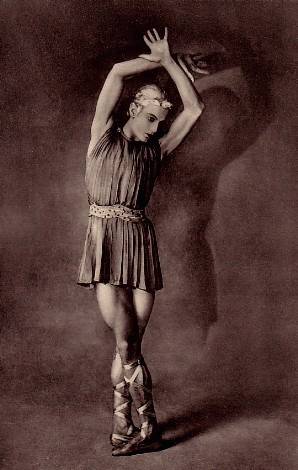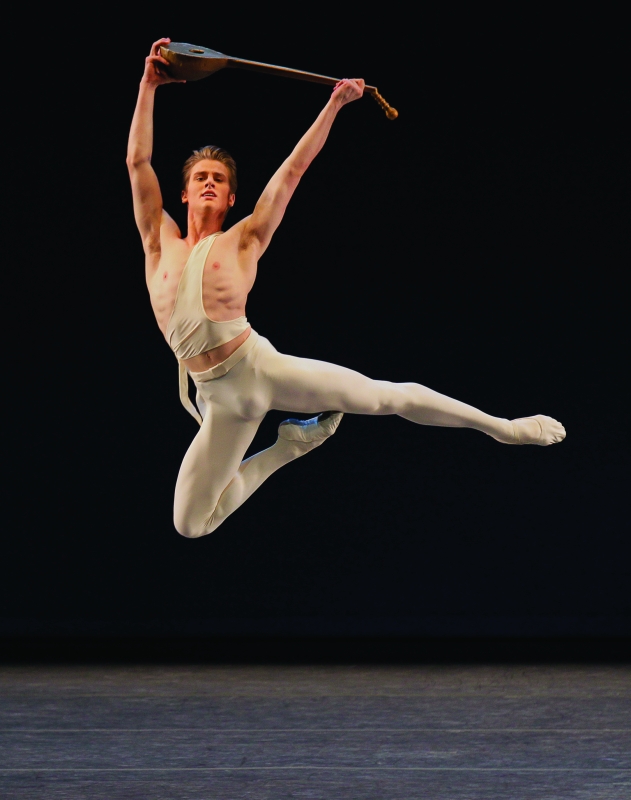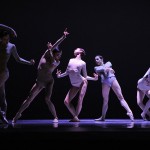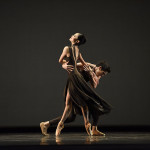
Leah Wellstein pays homage to Balanchine, Stravinsky, the Sun God and those amazing Quechuas. (Photo courtesy of Rachelle Brisebois)
Having just hiked four days through cold and rain, covering 49 kilometres of the Inca Trail from Cuzco through the Andean cloud forest to Machu Picchu, Leah celebrates her arrival at this sacred Inca site by stepping into an iconic pose from George Balanchine’s monumental ballet Apollo. With the Sun Gate ahead and the Temple of the Sun behind her, Leah executes her homage to the Sun God, and to the formidable Quechuas, who worshipped the deity and who twice a year made the pilgrimage to Machu Picchu in time for the summer and winter solstices.
Apollo marked the beginning of a remarkable 43-year collaboration between two Russian exiles, Balanchine and Stravinsky, which ended only with the composer’s death in 1971. Its premiere by Diaghilev’s Ballets Russes in 1928 hit the ballet world like an explosion, defining the stripped-down, sculptural neoclassical style that was to change the shape of Western dance – not just ballet – forever. Balanchine’s influence can be seen in the works of modern choreographers across dance genres, from Bob Fosse to William Forsythe and SYTYCD’s Sonya Tayeh.
Deeply respectful of his roots in the classical St. Petersburg tradition but yearning to experiment with ideas that he had absorbed from the Soviet avant-garde theatre and from working with Diaghilev, Balanchine stretched and skewed the classical vocabulary, shocking traditionalists, and in the process developed not only a striking new choreographic style but a new technique for today’s generation of dancers, a technique that has come to be known as quintessentially American: lean, quick, angular, daring, frequently off-balance, and featuring higher extensions than had ever been attempted before.
Balanchine came to be famous for creating ballets around women (“ballet is woman,” he said, “men are consorts”) but Apollo was an early work created, at Diaghilev’s request, to showcase Serge Lifar, who happened to be Diaghilev’s lover and who was blessed with a beautiful body but limited technique.
Nonetheless the technique required to dance Apollo was difficult, not simply the solo variations which feature entrechat sixes finishing on one leg and multiple pirouettes on a bent standing leg with preparation and landing in demi-pointe, but also the partnering which requires Apollo to manipulate and support three female dancers (the Muses Terpsichore, Calliope and Polyhymnia) at the same time.
The role has been danced by many of the world’s greatest dancers including Rudolf Nureyev, Edward Villella, Mikhail Baryshnikov and Peter Martins. And just this season the very young Chase Finlay from New York City Ballet has had audiences swooning, even the famous curmudgeon Alastair Macaulay who lately has had very few nice things to say about NYCB.
Ballet to the People, however, thinks that no one quite lives up to Jacques D’Amboise’s electrifying onstage transformation from wild child to noble god, both inspired by and inspiring his Muses who are at times remote and ethereal, at other times playful and seductive.
This pose, in a wide 4th position with the forward leg in a deep fondu, is particularly striking for its exaggerated stretch, the arm reaching skyward with “jazz hands.” The dancer alternately clenches his fists then stretches his fingers, as if in wonderment as his newfound divinity shoots an electric current through his body – a gesture that Balanchine said was inspired by a blinking electric sign at London’s Piccadilly Circus.
While Leah and her trekking companions were proud to have accomplished their hike in four days, battling altitude sickness and treacherously slippery climbing conditions, they humbly noted that their guides and porters, led by the awe-inspiring Javier and Herlin, routinely finish such treks in under four hours.
Te rendimos homenaje.









